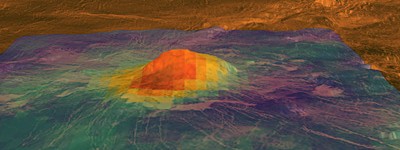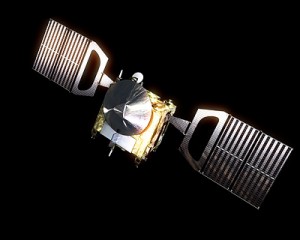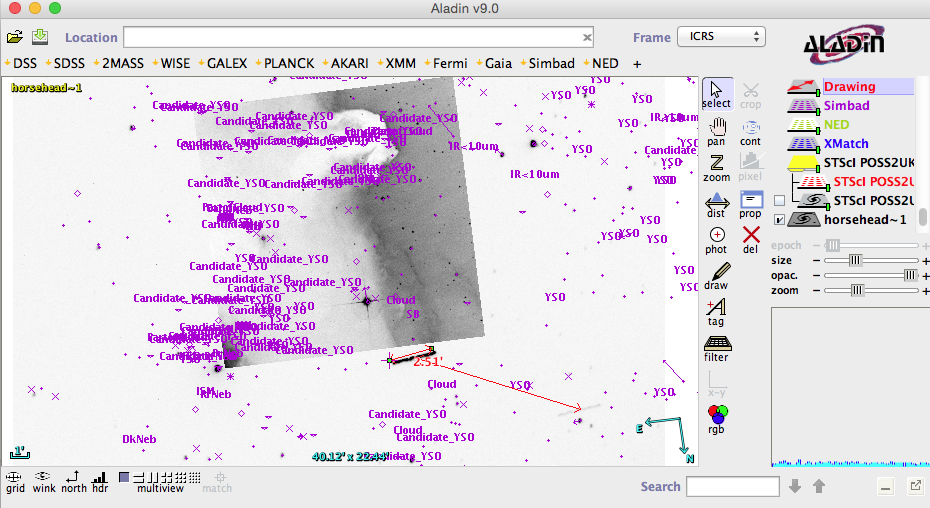Venus: Another volcanically active world?
SETICon in the Bay Area, California (Aug 13-15 2010)
April 19, 2010Happy Earth Day 2010 – Earth"Spheres" from Space
April 22, 2010Dear Planetary enthusiasts,
Over the past week, we may have heard a lot about a famous volcano in Iceland, named Eyjafjallajokull, which forced more than 64,000 flights between Europe and the rest of the world to be canceled and affected the vacation and business trips of several millions of people. But have you heard about the Idunn Mons, Hathor and Innini Montes and Mielikki Mons? These are other exotic names for volcanoes located on another planet, a world that we suspected for a long time to be volcanically active as well. A recent discovery may have confirmed the existence of active volcanoes on Venus.
Venus, often called the twin sister of our planet, is so different that it could be considered as an hellish version of Earth. It has a dense atmosphere with extreme greenhouse effect with a temperature on the surface as high as 900 deg C. As such high temperature the rocks have elastic behavior, making Venus free of plate tectonics. The Magellan orbiter from mapped 98% the surface of the planet using its powerful radar from 1990 to 1994. These data revealed the presence of volcanic features on Venus, such as shield volcanoes and lava fields. However, we never saw an eruption taking place which will be the “smoking gun” to confirm that Venus is still a volcanically active planet. When Venus Express, a space mission built and managed by ESA, reached the orbit of Venus in April 2006, its main objective was to detect the presence of these active volcanoes.
 After four years of data collecting and analysis, the team led by Suzanne Smrekar, researcher at the JPL, published on April 8 a Science Express report, announcing the discovery of three active volcanoes located above “hot spots”. These hot spots have characteristics similar to the Hawaiian volcanoes, such as broad dome shape linked with a gravitational anomaly suggesting that lava is upwelling from the interior deforming the surface of the planet. VIRTIS, the Visible and Infrared Thermal Imaging Spectrometer, a near-infrared instrument on board Venus Express imaged three areas named Imdr, Themis, and Dione Regiones. These recent data revealed a brightening of on the slope of volcanoes located in these areas detected the near-infrared (1 micron) suggesting a warm and young terrain. The team estimated that these lava flows are likely 250,000 years or less, indicating that Venus is indeed a volcanically active world.
After four years of data collecting and analysis, the team led by Suzanne Smrekar, researcher at the JPL, published on April 8 a Science Express report, announcing the discovery of three active volcanoes located above “hot spots”. These hot spots have characteristics similar to the Hawaiian volcanoes, such as broad dome shape linked with a gravitational anomaly suggesting that lava is upwelling from the interior deforming the surface of the planet. VIRTIS, the Visible and Infrared Thermal Imaging Spectrometer, a near-infrared instrument on board Venus Express imaged three areas named Imdr, Themis, and Dione Regiones. These recent data revealed a brightening of on the slope of volcanoes located in these areas detected the near-infrared (1 micron) suggesting a warm and young terrain. The team estimated that these lava flows are likely 250,000 years or less, indicating that Venus is indeed a volcanically active world.
Since the researchers did not witness an eruption, there is still controversies about the interpretation of these data and their conclusion. To improve their analysis, it is probable that several groups of planetary scientists will test in lab the effect of weathering of Venus rocks in the environment of this planet… a fun project for a graduate student considering the extreme pressure and temperature on the surface of Venus.
Find below two recent pictures of well-known volcanoes: The Eyafallajökull on Earth and the Idunn Mons on Venus. Our solar system is full of sporadic, violent, beautiful and mysterious events, but volcanic eruptions that we can see on Earth and on Io, or geysers on Enceladus, are certainly the most magnificent events. Let’s hope that soon we will witness one of these eruptions on Venus as well.
Franck M.
[Left] Clear starry night above the eruption of Eyafallajökull, currently active in Iceland (Photos Marco Fulle, 16 April 2010). [right] Combined 3-D radar image of the volcanic peak Idunn Mons in the Imdr Regio area overlapped with the thermal emission signature of the Venutian volcano. Red indicates a higher emissivity, so a young and warm surface. (c) NASA/JPL/ESA.![[left] Clear starry night above the eruption of Eyafallajökull, currently active in Iceland (Photos Marco Fulle, 16 April 2010). [right] Combined 3-D radar image of the volcanic peak Idunn Mons in the Imdr Regio area with Thermal emission signature of the Venutian volcano. Red indicates a higher emissivity, so a young and warm surface. (c) NASA/JPL/ESA.](http://www.cosmicdiary.org/fmarchis/files/2010/04/earth_venus-300x99.jpg)



4 Comments
Dr. Marchis-
First off: Nice hat….
Next: One of the reasons I’ve seen stated (just as someone following the “popular astronomy media”) for the earth’s high degree of plate tectonic activity is due the proposed collision of “Theia” (a Mars-sized object) with the Earth that left us with a big molten iron core, and a big moon that spins around and gravitationally churns us.
Venus has an iron core too, but if the planet doesn’t have a magnetic field, that means the core isn’t spinning and molten, right? If so, and since Venus lack a moon, where is the activity coming from that would cause volcanos to form? Or is it just a matter of degrees (no pun intended), where Venus’ core is still molten and spinning and producing heat, but not to the level of earth’s core?
Thanks much, and keep up the good work!
Venus does not have a global magnetic field, because its spin very slowly (243 days Earth days). Its interior is very similar to Earth: an iron core about 3000 km in radius, a molten rocky mantle comprising the majority of the planet. Magellan gravity data indicated that Venus’ crust is stronger and thicker, so there is plate tectonic on this planet. The volcanism is therefore more localized and linked with the existence of hot spots, not due to the fracture of the plates like we see for the majority of volcanoes on Earth.
Thanks for reading this blog.
Excellent article. Tu a été bien inspiré de relier l’éruption du volcan islandais, qui a défrayé toutes les chroniques européennes, aux études volcaniques sur Vénus que tu relates; et de profiter ainsi de l’intérêt momentané et un peu forcé des populations. Cela me donne une idée sur la manière d’écrire des articles au journal “Le Tarn Libre”. Bien sûr ce journal est loin d’être scientifique mais par contre très évènementiel, et donc de profiter de ce genre d’évènements pour parler sciences.
J’espère que tu abreuvera encore mes connaissances dans ton blog et si tu es d’accord, je pourrais m’en servir…
I big fan of http://www.cosmicdiary.org/blogs/nasa/franck_marchis/?p=731, Greetings from Panama. Me share pretty video.